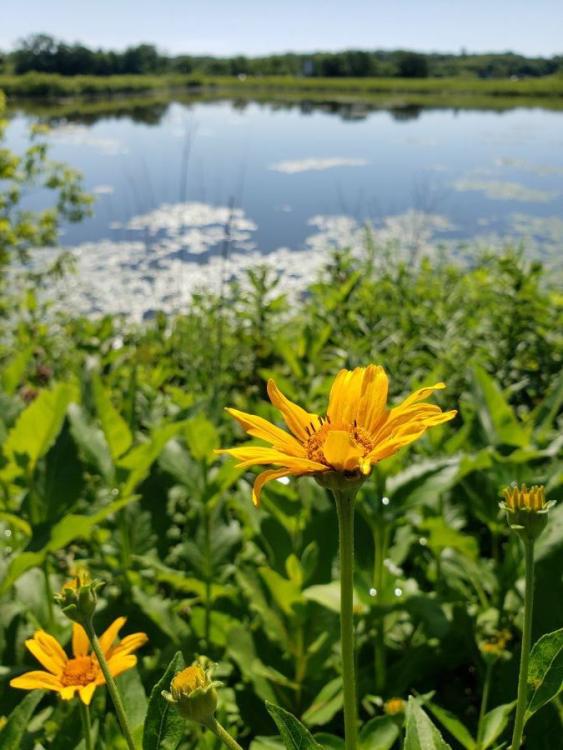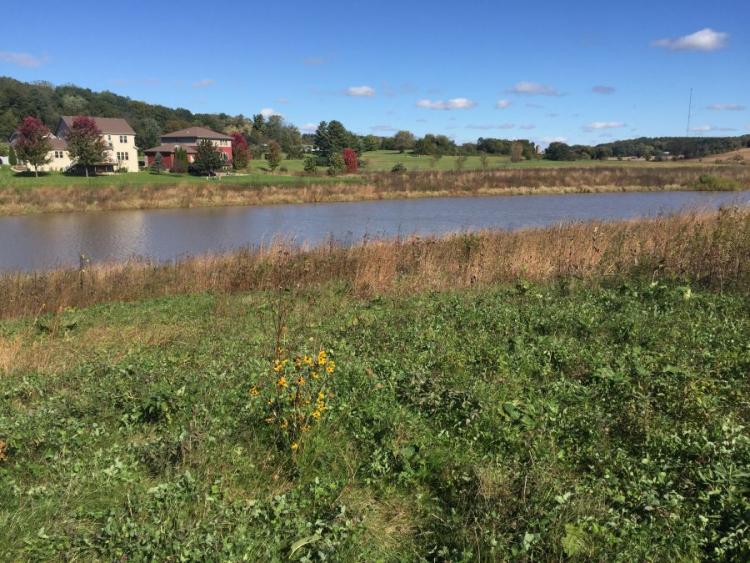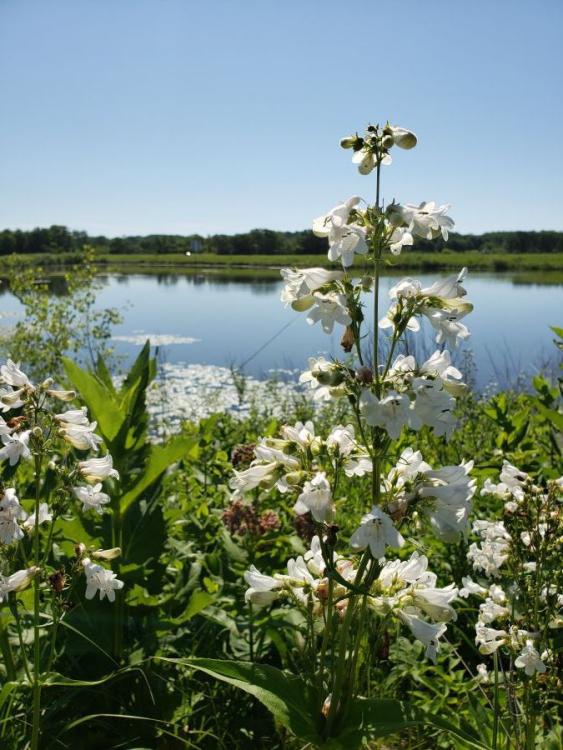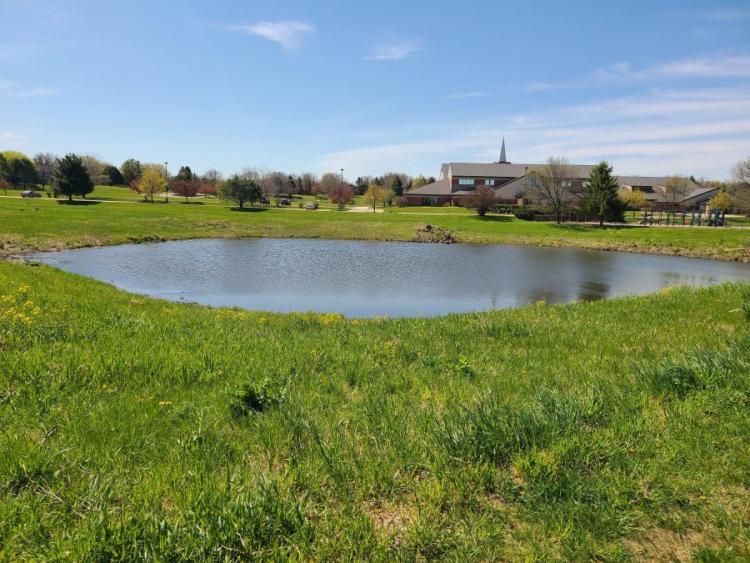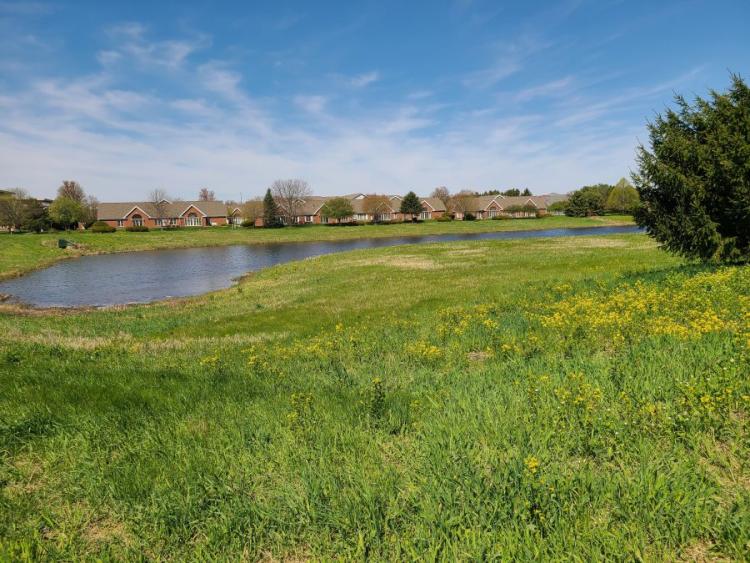
Ponds
The City of Madison has approximately 300 ponds on stormwater utility owned land, and even more that are part of the greater stormwater drainage system. These engineered ponds are connected to other features of the drainage system by culverts, underground storm drains, and channels. Detention ponds are an effective tool for treating stormwater: After a rain event, the ponds swell with water, like a bathtub, then slowly release that water downstream. Engineered ponds help the whole stormwater system meet its goals by:
- Improve water quality: When stormwater is detained, the water slows down which allows sediment and nutrients to drop to the bottom of the pond.
- Minimize potential for flooding: by holding excess stormwater and slowly releasing it, downstream flooding is prevented.
The City of Madison has both dry ponds and wet ponds. Wet ponds hold water permanently and are more effective at removing sediment. Dry ponds do not hold water when it isn’t raining. Both dry and wet ponds fill up with water when it rains and release the water slowly. When stormwater from pipes or channels reaches the pond, the water slows down which allows the sediment to be captured at the bottom of the pond instead of traveling to our rivers and lakes.
Additionally, the City has a variety of pond types that infiltrate stormwater either directly into the ground or through a specific soil mix that removes pollutants before ground infiltration. Alternatively, some ponds are designed with an under drain which directs stormwater further down the system. Ponds are routinely inspected to make sure that they are functioning as designed. Rapidly progressing erosion, trees growing through concrete structures, damaged pipes, and lack of sediment storage all can lead to the need for maintenance. The City anticipates that accumulated sediment will eventually need to be removed so that the ponds have space to keep effectively removing sediment in the future. This process is called dredging.
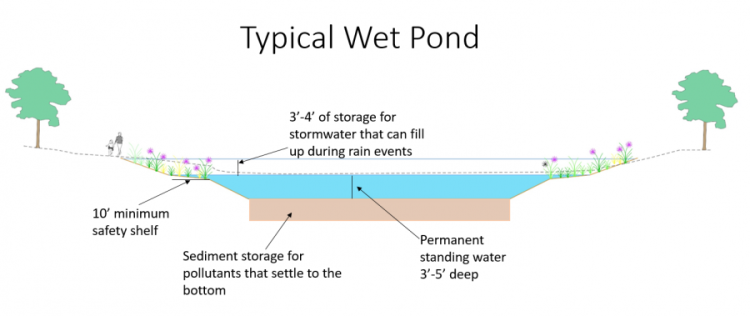
The City does not install fencing around stormwater infrastructure. Fences can catch debris and impede stormwater overflows. They can also make emergency access more challenging in an event that it is needed. Fences are also more difficult to work around for maintenance such as mowing. City designs stormwater infrastructure with safety features such as a “safety bench” around stormwater ponds with standing water. A safety bench is a gently sloped area that is created so there are is not a sudden drop off right at the water’s edge. These benches are typically 15 ft wide and installed at a 10:1 slope to encourage wetland vegetation to grow. The tall, dense, wetland vegetation creates a barrier to deter people and pets from swimming and playing in the stormwater ponds, which is not advised.
Having a stormwater pond adjacent to your property should not impact your homeowner insurance, however you should contact your insurance agent directly if you have specific questions on your policy.
